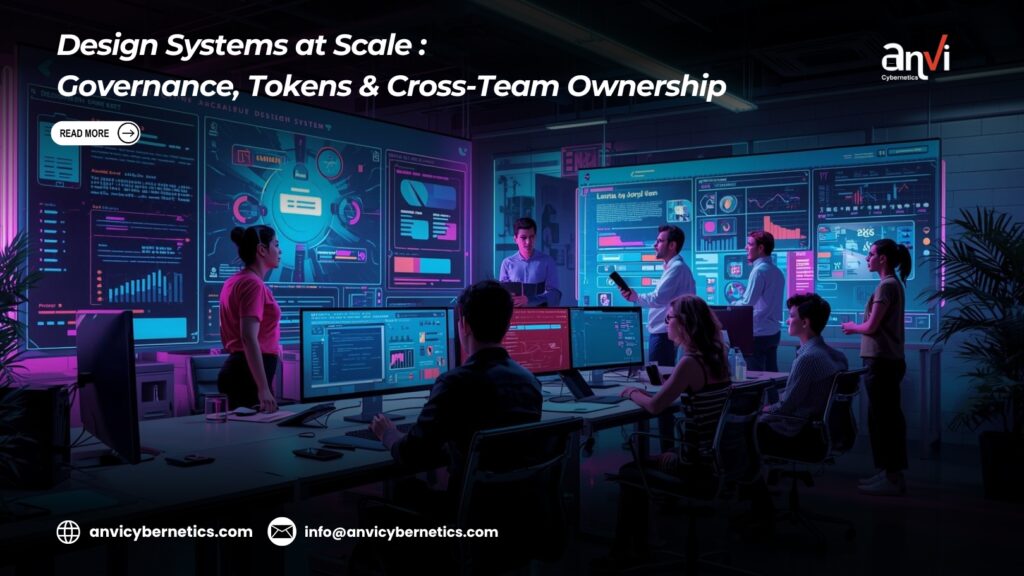
Design Systems at Scale: Governance, Tokens & Cross-Team Ownership
Why scaling a design system is a people + process problem
Pillars of a scalable design system
Governance models — pick what fits
Centralized governance (single source of truth)
Federated governance (hub & spoke — recommended start)
Distributed governance (community owned)
Design tokens — semantic, platform-ready, and versioned
Token categories: color, typography, spacing, elevation, motion.
Best practice: use semantic names like color-error or space-xxs instead of #ff0000 or 8px.
Token pipeline: author → transform → publish.
Naming, versioning and safe migrations
Consistent naming reduces mistakes. Use a namespace convention such as color.brand.primary or component.button.primary. Follow semantic versioning:
Component libraries: API contracts, docs & tests
Contribution workflows and automation
Automation both enforces standards and reduces manual overhead for maintainers.
Cross-team ownership: roles and responsibilities
Cross-team ownership: roles and responsibilities
Host docs in Storybook or Confluence (https://www.atlassian.com/software/confluence) so teams can find examples and migration steps quickly.
Testing, monitoring and runtime telemetry
Migration strategies for legacy UI
Automated codemods reduce manual effort and speed migration across many repos.
KPI framework — measure what matters
Example: rolling out a new theme safely
Promotional spotlight (short & inline)
Anvi Cybernetics helps teams implement design systems at scale — from token pipelines to Storybook automation and codemods for migration. Services include governance setup, tooling pipelines, and hands-on integration with engineering squads to accelerate adoption and reduce UI debt. Learn more: https://anvicybernetics.com/services/web-development
Tools & resources (official links)
- Style Dictionary — https://styledictionary.com/
- Storybook — https://storybook.js.org/
- Chromatic — https://www.chromatic.com/
- Percy — https://percy.io/
- Figma — https://www.figma.com/
- axe / axe-core — https://www.deque.com/axe/
- GitHub CODEOWNERS docs — https://docs.github.com/articles/about-code-owners
- Confluence — https://www.atlassian.com/software/confluence
- SonarQube — https://www.sonarsource.com/products/sonarqube/




